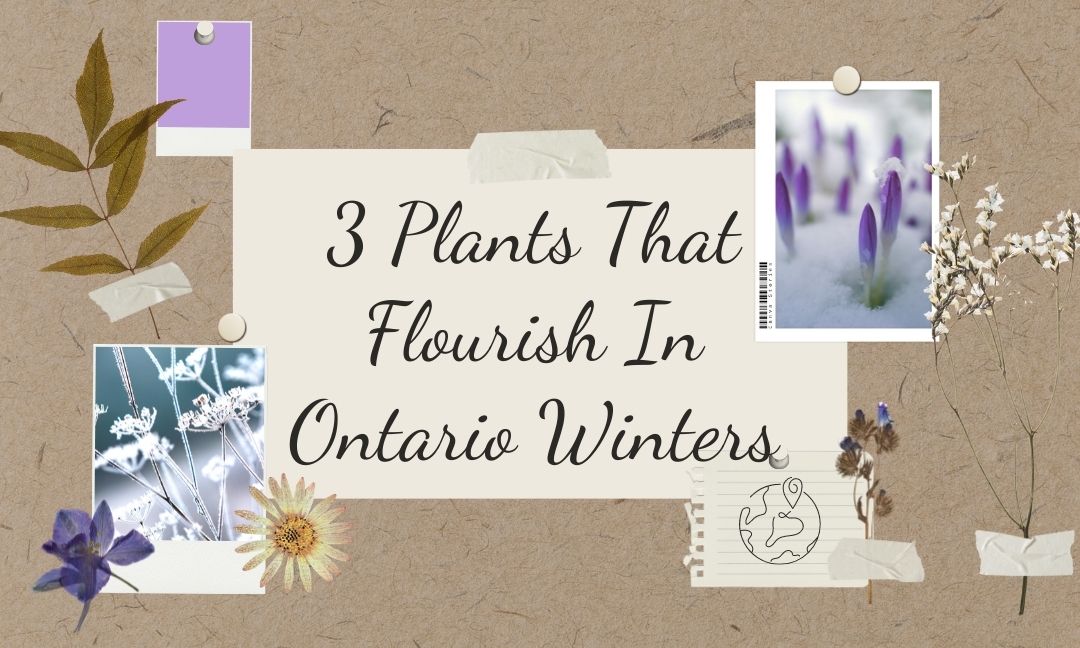Author: Deana Bjedi
Editor: Connor Fraser
Graphic Designer: Emily Sheng
Publisher: Rayna Almas
We know most plants grow in spring, summer and fall but did you know there are also quite a few that grow in the winter?. There is a diverse variety of plants that flourish in Ontario’s sometimes harsh winters. Today I will be covering two edible plants that you can enjoy during the winter and one beautiful flower to decorate cold spaces in and or outside of your home.
Oyster mushrooms
First up, we have edible oyster mushrooms. An oyster mushroom is a type of fungi with a cap that resembles the shape of an oyster. These mushrooms can be found growing in the woods of Southern Ontario all year round. Once you have these oyster mushrooms, it is important to store them properly in order to keep them fresh. Oyster mushrooms should not be soaked in water because they absorb it very easily and can get soggy, instead you should clean them with a damp wash-cloth. They have a mild, savory taste that is best brought out when they are cooked. They can be sautéed in a bit of salted butter and thyme or can be easily incorporated in customizable dishes like stir-frys. Here is a delicious and easy to make oyster mushroom sauté that you can eat alone or alongside another dish.
Maple sap (sugar maple trees)
I don’t think there is a Canadian who doesn’t love maple syrup. and tTo the luck of us maple syrup lovers, maple sap can certainly be extracted in the winter. Sugar maple trees flourish in southern Ontario winters and this is what allows maple sap and maple syrup to be available during the winter as well. Although maple syrup can be made from all maple tree species, sugar maple trees produce sap with the highest sugar concentration. In order to extract the maple sap, you need to tap a maple tree, and then boil the sap. It is best to boil the sap outside on a wooden stove because the cool, dry air sucks the steam up quickly while boiling. When the sap bubbles, darkens and reaches 103°C, the sap has been transformed to maple syrup. Maple syrup can be enjoyed as a topping on your favourite breakfast foods (ex. oatmeal, pancakes, waffles, etc.) and even in desserts like these glazed maple shortbread cookies.
Snowdrops
The last plant on this list is inedible but works as a beautiful addition to your winter garden or to a cold space in your house. Snowdrops are delicate white flowers in the Liliaceae family that traditionally grow in open fields during the winter and spring. If you want to plant snowdrops of your own, ensure that you plant them in moist, well-drained soil and keep them in partial shade. They can be grown indoors in a plant pot and cold space (ex. a windowsill) or outside in the grass, in spring garden borders or rock gardens. If you plant snowdrops in plant pots, you will need to repot and change out the soil annually because snowdrops suffer in dry soil that can occur during the summer. The easiest way to grow snowdrops is by replanting a grown snowdrop (which you can buy online or at a garden centre) right after its flowering stage but before its foliage has turned yellow. The best time to plant snowdrops is from February to March and the best part is that they do not require any maintenance while growing. This pretty white flower would make a great addition to any garden.
Well, it turns out you can find edible and inedible plants flourishing during the winter. This means you can also continue expanding your garden to all kinds of plants year round!.
Sources
http://ontariowildflowers.com/main/season.php?type=4
http://ontariowildflowers.com/main/species.php?id=853
https://www.popsci.com/story/diy/edible-winter-plants/
https://www.thespruceeats.com/what-are-oyster-mushrooms-4172003#toc-how-to-store-oyster-mushrooms
https://tapmytrees.com/collect-sap-make-syrup/
https://files.dnr.state.mn.us/destinations/state_parks/maplesyrup_how.pdf
https://www.tasteofhome.com/recipes/glazed-maple-shortbread-cookies/
https://juliasalbum.com/oyster-mushrooms-garlic-and-green-onions-saute-paleo-gluten-free/
https://www.gardenersworld.com/how-to/grow-plants/how-to-grow-snowdrops/
https://www.thejoyofplants.co.uk/keeping-snowdrops-indoors

